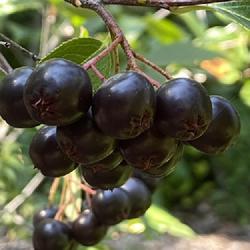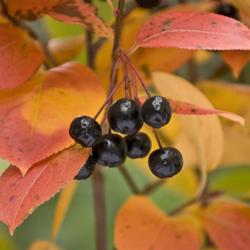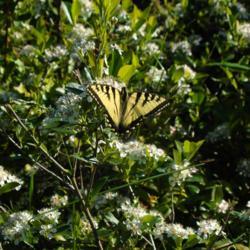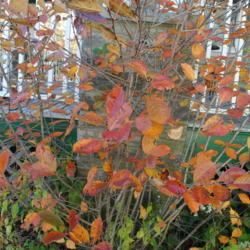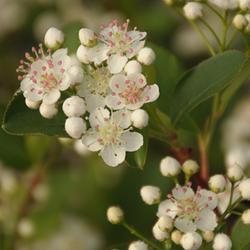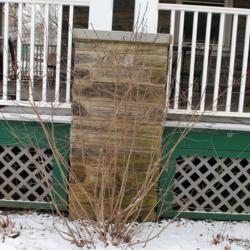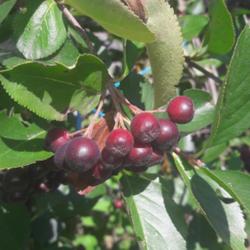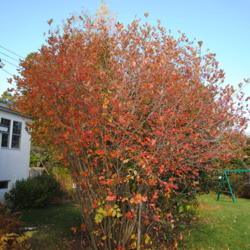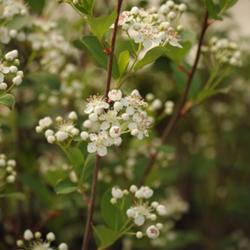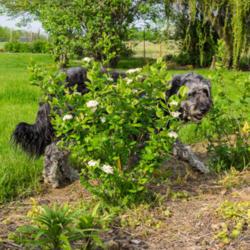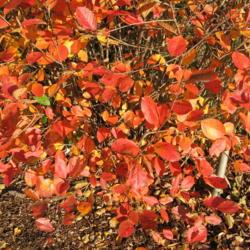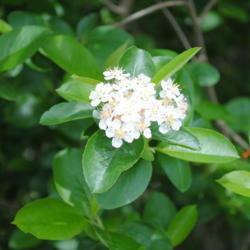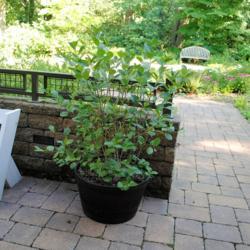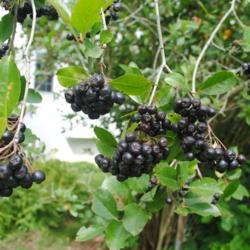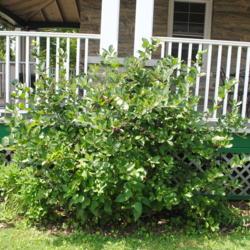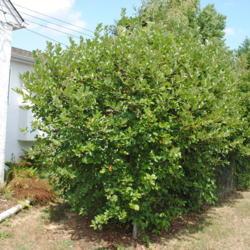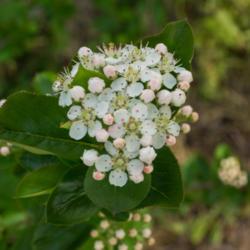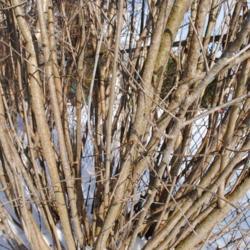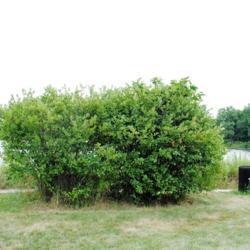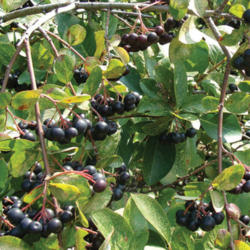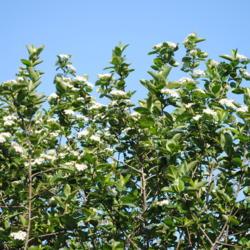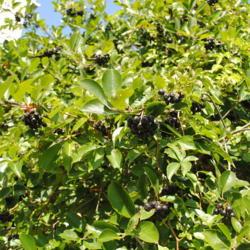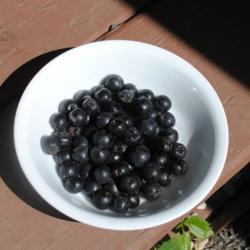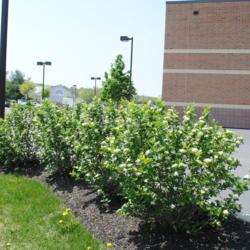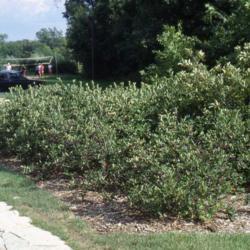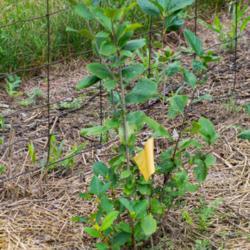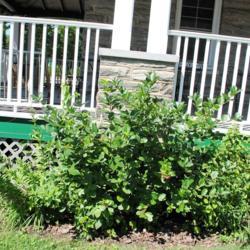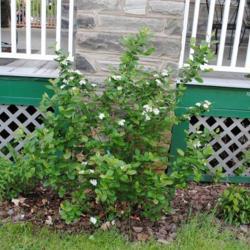Posted by
ILPARW (southeast Pennsylvania - Zone 6b) on Nov 29, 2017 1:41 PM concerning plant:
Black Chokeberry is a smooth, clean, attractive shrub with wonderful foliage that gets good orange to red fall color, though sometimes it is not all at once, especially in humid southeast PA. Its leaves are wider and more rounded than those of the Red Chokeberry and the undersides of the leaves are not whitish like the Red species. It has big, red, sharp buds and smooth gray to gray-brown bark, nice white flowers in spring, and bearing black glossy fruit that matures to black in late July or August. The black fruit is loved by a number of songbirds and, though tart, is edible by humans. The fruit is used in jams, jellies, and juices commercially, sometimes sold at health food stores or included in other common juice mixtures, and the fruit is full of antioxidants. The fruit starts to mature to black in late July or early August, before the red species does starting in September. The 'Viking' and 'Nero' cultivars are grown the most in orchards for their heavy loads of fruit that are less tart. Black Chokeberry is normally about 3 to 6 feet high, (usually 5 to 6 feet high and wide) and there are a number of cultivars available. In nature the Black Chokeberry usually grows in draining wet, acid soils of bogs, swamps, and along watercourses, but it also grows upland in fields and on cliffs. Its native range is from Nova Scotia and southeast Canada through New England through the Mid-Atlantic down the Appalachians to north Georgia & Alabama and around the Great Lakes, except to north side of Superior. This species is not known by the general public, so it is mostly planted by landscape architects & designers and park district staff occasionally. It should be used a lot more.
There is a natural variety being (A. melanocarpa elata), the Glossy or Tall Black Chokeberry, that grows about 10 to 15 feet high and really does not sucker. My Tall Black Chokeberry is now 14 feet high x 16 feet wide near the top in 2018, and it was planted in the east side yard as a 2 gallon plant from a native plant nursery in 2003. During late July and most of August of 2018 my shrub was weighed down with lots of fruit, but by very late August, the birds ate all of the fruit away and it was not drooping any longer. The spring and summer of 2018 were so wet that my shrub lost most of its leaves due to fungi around mid-September. The Tall or Glossy variety is mentioned as entry #325 in the famous -- "Trees, Shrubs, and Vines, A Pictorial Guide to the Ornamental Woody Plants of the Northern United States Exclusive of Conifers" by Arthur T. Viertel, also in the 'Manual of Woody Landscape Plants" by Michael A. Dirr it is mentioned on page 110; and listed in the Ornamental Growers Association of Northern Illinois showing that Clavey's Nursery, Hinsdale Nursery, and Midwest Groundcovers sell this variety. Why some botanists are not recognizing this variety, I don't know. There is a big difference from a plant getting about 4 to 6 feet high and others getting 10 to 15 feet high.
Chokeberry shrubs are similar to Serviceberry trees and shrubs, and I adore both. New, young chokeberry shrubs should be protected with fencing if there are a lot of rabbits around that can feed on their buds and small twigs in winter.
Posted by
skopjecollection (SE europe(balkans) - Zone 6b) on Jul 17, 2022 10:00 AM concerning plant:
This plant gained popularity in my country roughly around 2010, advertised as some sort of wondercrop healthfood and such malarkey. Now it's somewhat widespread as the berries can be found in the tea and frozen food industry.
The berries' main flaw is their astringency. Stronger than that of a quince, but less than that of the non-ready-to-eat types of persimmon. For most people this is mitigated by freezing and defrosting the fruit. Other than that, it's less tart than some varieties of blackberry or currant/gooseberry, with a typical berrylike flavor mixed with a tinge of fresh medlar. Overall 6,5/10.
I often see them grown in sunny conditions, and while they don't struggle with the climate as much as some plants do (persimmons, peaches, loquats), the main problem is that birds find the berries rather to their liking and often end up emptying a plant before harvest, requiring farmers to use netting and such to prevent this.
Ripening time here is beginning of august up until september.

